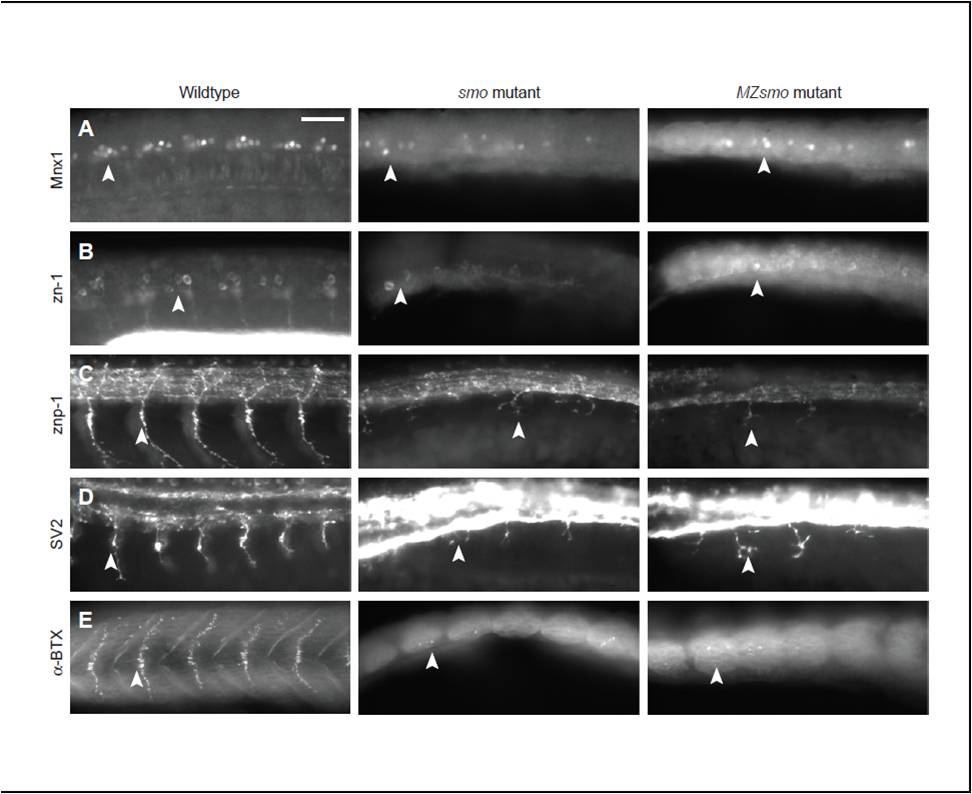Fig. S3
PMNs in MZsmo mutants retain native identity and activity. Wild-type, smo and MZsmo embryos were fixed at 24 hpf and stained for a battery of PMN markers. All embryos are viewed laterally, anterior to the left. Arrowheads highlight PMN staining. (A,B) The PMN markers Mnx1 (A) and zn-1 (B) confirm that PMNs in MZsmo mutants retain native identity despite the complete lack of Hh signaling. (C) The motor axon marker znp-1 demonstrates that smo and MZsmo PMNs have a similar ability to extend axons, albeit shorter than their wild-type counterparts. (D) Immunostaining with the SV2 antibody, which labels synaptic vesicles of active axons, indicates that smo and MZsmo PMN axons have similar intrinsic activity. (Higher levels of SV2 staining are observed in the neural tube in smo and MZsmo embryos.) (E) Labeling with the nicotinic acetylcholine receptor binding peptide α-bungarotoxin, which binds to neuromuscular junction nicotinic acetylcholine receptors, indicates that smo and MZsmo PMNs axons retain some ability to induce clustering of these receptors. Scale bar: 50 μm.

